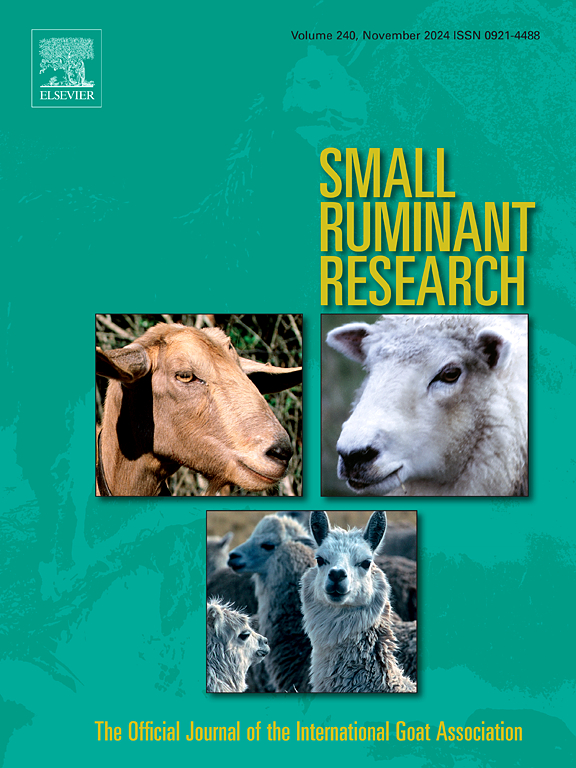The impact of genetic selection for increased production on fitness traits of small ruminants
IF 1.6
3区 农林科学
Q2 AGRICULTURE, DAIRY & ANIMAL SCIENCE
引用次数: 0
Abstract
Many sheep and goat breeds worldwide are subjected to high levels of selection emphasis to increase production of meat, milk and fibres. The continuous selection on a small number of traits have resulted in unintended consequences, mostly as adverse effects on the fitness of animals. Selection for increased dairy production led to an increase in mastitis incidence, while selection for increased meat yield impacted on the prevalence of MSTN and CLPG mutations. Reproduction efficiency is the single most important trait in any small ruminant production system. Selection for increased litter sizes in small ruminants has resulted in increased numbers of triplet and quadruplet pregnancies, with an associated increase in mortalities and reproductive wastage. To optimize a genetic response, a balanced approach should be followed to set breeding objectives that include some of these fitness traits. Selection for increased resilience to even one stressor (such as mastitis) could result in an improvement of overall robustness. As the accurate recording of health and welfare traits is currently a limitation, mitigation strategies should include the generation of novel phenotypes which could also be included in genomic solutions to address the current shortcomings of breeding programs.
提高产量的遗传选择对小反刍动物适应性状的影响
世界上许多绵羊和山羊品种都受到高度重视,以增加肉、奶和纤维的产量。对少数性状的持续选择导致了意想不到的后果,主要是对动物适应性的不利影响。增加乳制品产量的选择导致乳腺炎发病率增加,而增加肉类产量的选择影响MSTN和CLPG突变的流行。繁殖效率是任何小型反刍动物生产系统中最重要的特征。在小型反刍动物中,选择增加产仔数导致三胞胎和四胞胎怀孕的数量增加,随之而来的是死亡率和生殖浪费的增加。为了优化遗传反应,应该遵循一种平衡的方法来设定包括这些适应性特征的育种目标。选择对哪怕是一种压力源(如乳腺炎)增强的弹性,也可能导致整体健壮性的提高。由于健康和福利性状的准确记录目前是有限的,缓解策略应包括产生新的表型,这也可以包括在基因组解决方案中,以解决目前育种计划的缺点。
本文章由计算机程序翻译,如有差异,请以英文原文为准。
求助全文
约1分钟内获得全文
求助全文
来源期刊

Small Ruminant Research
农林科学-奶制品与动物科学
CiteScore
3.10
自引率
11.10%
发文量
210
审稿时长
12.5 weeks
期刊介绍:
Small Ruminant Research publishes original, basic and applied research articles, technical notes, and review articles on research relating to goats, sheep, deer, the New World camelids llama, alpaca, vicuna and guanaco, and the Old World camels.
Topics covered include nutrition, physiology, anatomy, genetics, microbiology, ethology, product technology, socio-economics, management, sustainability and environment, veterinary medicine and husbandry engineering.
 求助内容:
求助内容: 应助结果提醒方式:
应助结果提醒方式:


